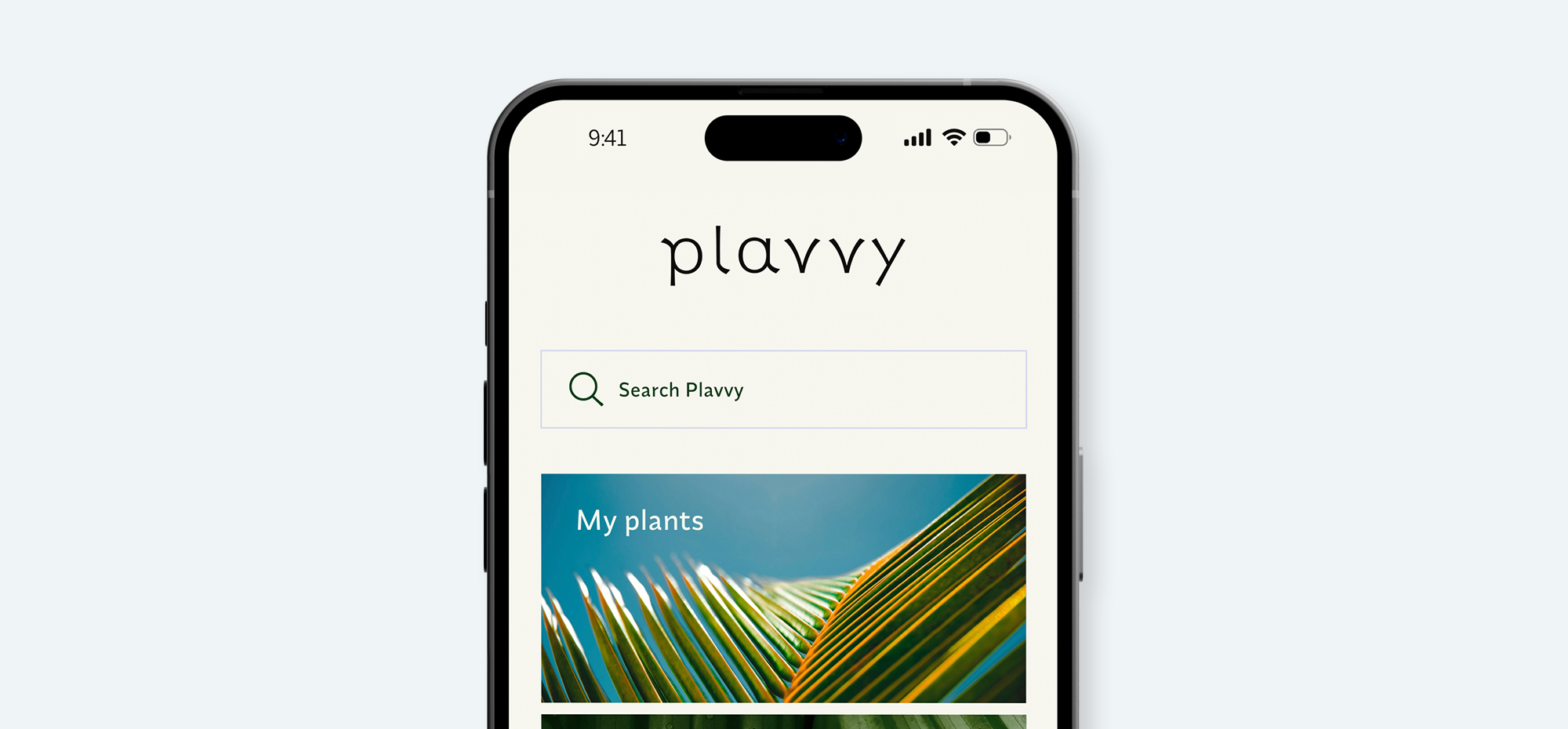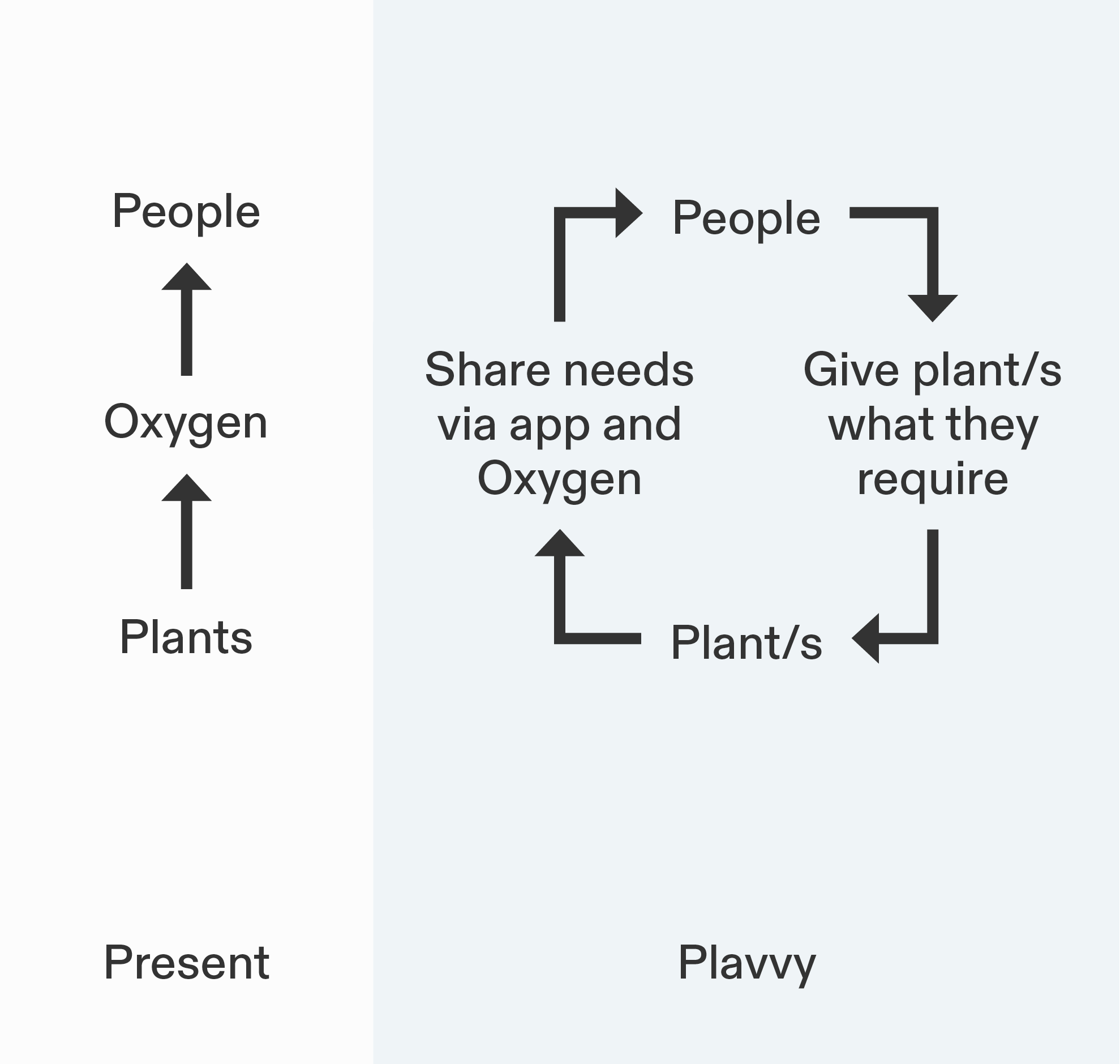
Plavvy App
Role
UX Designer
UX Designer
Category
Plant Care
Plant Care
Why
Personal Project
Personal Project
Introduction
Have you ever gone on holiday and asked a friend or family member to take care of your plants, and when you return, you find your plants have been wrongly cared for and neglected? This project aims to solve the above problem and more.The Outcome
Plavvy is a one-way plant messaging app that communicates the plant’s needs to the plant owner. The app has an accompanying device through which the plant communicates.
The final solution, Plavvy, is designed to meet the increasing demand for plants by leveraging their significant benefits. Plavvy aims to simplify the process of plant care, fostering a deeper connection and understanding of these living organisms.

Project Case Study
Challenge
The challenge is to make the plant care process easy, enjoyable, and understandable for the owner, their friends, and their family.Research
The surrounding subject of plants and all their requirements is vast. To help acquire a better understanding of the subject, I began this project by conducting comprehensive research on the competitors, ensuring a solid foundation for our project.
Competitor Analysis
Chen Xiaodong plant research and Vivent products stand out in a market full of water sensors. They translate plant electrical signals into understandable formats.
Survey
To expand my understanding of the users, I utilised Google Forms to conduct a survey. The survey respondents ranged from friends to Facebook groups related to plants.
Competitor Task Analysis
Examining the survey responses, I identified users' pain points. This information guided me to deconstruct other apps that could potentially address these issues.


The Research Take-Away
After filtering the survey, I was left with 24 responses, and the notable points are as follows.
- Fifteen people ask friends or family to look after their plants when they are away. The rest do nothing; choose plants they do not need to worry about, soak them in water before leaving, or use a dripping device.
- The exact number of people who returned from their time away and found their plants neglected.
The survey demonstrates a problem exists; most people with plants inside leave their plants for prolonged periods with uncertain care or intentionally limit their choice of plants when buying and still return to find them neglected or in poor health.
Exploring the competitors which solved the main tasks that the survey demonstrated to be challenging I asked myself how can we change this process and turn uncertainty into certainty regarding plant care?
Persona
I translated the research into a persona to guide the project through development on a relatable level and to understand the audience.
Beth - 30 - She/Her
Customer Service Manager
Beth loves her plants. She wants to trust someone else to care for them when she goes away and to return to healthy plants.
Customer Service Manager
Beth loves her plants. She wants to trust someone else to care for them when she goes away and to return to healthy plants.
Problem Statement
Progressing Beth's persona to identify the problem/s, I concluded that:Beth wants to care for her plants to be effortless for herself and her friends and family when she asks them to take care of them when she goes on holiday.
How Might We
To better understand hmw solve the challenge, I broke down the problem statement into bite-sized pieces. How might we:- Make the process of taking care of plants painless.
- Communicate with the plant carer about the plant's needs.
- Transfer the plant care duties to other plant carers.
- Connect or link with the plant.
Project Development
Taking everything compiled during the research stage, I began looking at ways to create a solution.
Sketches
First, I sketched ideas based on everything established thus far.



Wireframes
Then, I merged everything found so far to make the wireframes.
Iterations
Lastly, I tested and developed the design to reach the solution.
Project Development Take-Away
While sketching ideas intending to help visualise the end product, I overlooked two flows within the research stage of the project: viewing the shared plants and two-way communication with the shared plant owner.Returning to the research, I noticed that the analysis of these flows in the Competitive Task Analysis is needed, and once completed, the wireframe was ready for testing.
The User Testing Take-Away
Two key areas of concern stood out during the app's testing. One was the clarity of a set of CTAs, and the other was the add icon in the menu.
![]()
1. Wireframe
2. Prototyping
3. High-Fidelity Prototype
The prime issue that arose during the user testing was the buttons on the pages that contained lists of plants. The users were uncertain whether the buttons were selected. On further iterations, I made the CTA's significance clearer.
![]()
Another crucial issue that, if left unsolved, could derail the app’s main intention was the add plant icon in the bottom menu. The initial add icon left the tester unsure, which led to further research, design iteration, and testing to find a solution.

1. Wireframe
2. Prototyping
3. High-Fidelity Prototype
The prime issue that arose during the user testing was the buttons on the pages that contained lists of plants. The users were uncertain whether the buttons were selected. On further iterations, I made the CTA's significance clearer.
Another crucial issue that, if left unsolved, could derail the app’s main intention was the add plant icon in the bottom menu. The initial add icon left the tester unsure, which led to further research, design iteration, and testing to find a solution.
Style Guide
To see the complete Plavvy branding, visit the Graphic Design page.

High-Fidelity Prototype Visuals

Final Thoughts
Plavvy’s problem space is purpose-driven towards a greener world with the assistance of tech. This is an area where the technology market is looking towards and expanding, allowing Plavvy to be at the forefront.
Additionally, research and user testing directed the steps taken to develop the Plavvy app and product. Ultimately, the process produced a result that solved the beginning challenge, allowing people to understand their plants, reducing the knowledge and skills required for plant care, sharing plant care, and further contributing to the discussion of plant communication.
Additionally, research and user testing directed the steps taken to develop the Plavvy app and product. Ultimately, the process produced a result that solved the beginning challenge, allowing people to understand their plants, reducing the knowledge and skills required for plant care, sharing plant care, and further contributing to the discussion of plant communication.
Next Steps
- Add additional plant-related content (link to a database on plant information).
- Further development and user testing of the accompanying product.
- Research how to make Plavvy go live.